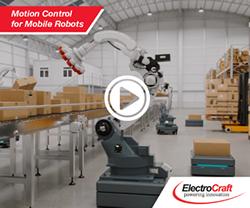Robot density nearly doubled globally – International Federation of Robotics reports
The use of industrial robots in factories around the world is accelerating at a high rate: 126 robots per 10,000 employees is the new average of global robot density in the manufacturing industries – nearly double the number five years ago (2015: 66 units). This is according to the 2021 World Robot Statistics, issued by the International Federation of Robotics (IFR).
The use of industrial robots in factories around the world is accelerating at a high rate: 126 robots per 10,000 employees is the new average of global robot density in the manufacturing industries - nearly double the number five years ago (2015: 66 units). This is according to the 2021 World Robot Statistics, issued by the International Federation of Robotics (IFR).
By regions, the average robot density in Asia/Australia is 134 units, in Europe 123 units and in the Americas 111 units. The top 5 most automated countries in the world are: South Korea, Singapore, Japan, Germany, and Sweden.
"Robot density is the barometer to track the degree of automation adoption in the manufacturing industry around the world," says Milton Guerry, President of the International Federation of Robotics.
Asia
The development of robot density in China is the most dynamic worldwide: Due to the significant growth of robot installations, the density rate rose from 49 units in 2015 to 246 units in 2020. Today, China's robot density ranks 9th globally compared to 25th just five years ago.
Asia is also the home of the country with the worldÂ's highest robot density in the manufacturing industry: the Republic of Korea has held this position since 2010. The country's robot density exceeds the global average seven-fold (932 units per 10,000 workers).
Singapore takes second place with a rate of 605 robots per 10,000 employees in 2020.
Japan ranked third in the world: In 2020, 390 robots were installed per 10,000 employees in the manufacturing industry. Japan is the worldÂ's predominant industrial robot manufacturer: Today, JapanÂ's manufacturers deliver 45% of the global robot supply.
North America
Robot density in the United States rose from 176 units in 2015 to 255 units in 2020. The country ranks seventh in the world - ahead of Chinese Taipei (248 units) and China (246 units).
Europe
EuropeÂ's most automated country is Germany - ranking 4th worldwide with 371 units. The annual supply had a share of 33% of total robot sales in Europe 2020.
Featured Product

